

You are using an out of date browser. It may not display this or other websites correctly.
You should upgrade or use an alternative browser.
You should upgrade or use an alternative browser.
skyleralan
PMA Member
There should be plenty of N left, more likely suffered loss's from heavy rain leaching it then brassicas using it.
The color of rye is normal so no worries
Thanks again!
Greeneyed Pickle
New Member
Well it took me a while but I've read most of the threads in your info filled corner of the internet. Amazing stuff and I REALLY appreciate all the info. After two yrs of struggling to figure out food plots(not my fault! I was dropped a lot as a child) I found this delicious plethora of info. Pleased to say it's really paid off!!
So thank you. Thank you for helping me improve my small corner of the world where I'm lucky enough to be able to spend time with my girls and wife.
Pics are of my first attempt at brassicas. I planted just over two weeks ago and it looks like they are coming up well. I'm looking forward to seeing how things develop and how the timeline will go for NC as apposed to IA.
Thanks again,
Tim
So thank you. Thank you for helping me improve my small corner of the world where I'm lucky enough to be able to spend time with my girls and wife.
Pics are of my first attempt at brassicas. I planted just over two weeks ago and it looks like they are coming up well. I'm looking forward to seeing how things develop and how the timeline will go for NC as apposed to IA.
Thanks again,
Tim
arrrgh11
Member
Paul - just wanted to thank you for all the advise and recommendations that you give here. This is the 2nd year that I have been working on your food plot prescription - I couldn't be happier with the results. I can already visibly see the improvement in the soil. Granted we have had almost perfect weather, but the improvement in my soil has made a big difference. My brassicas are currently over knee high with some good growing weather still to come....
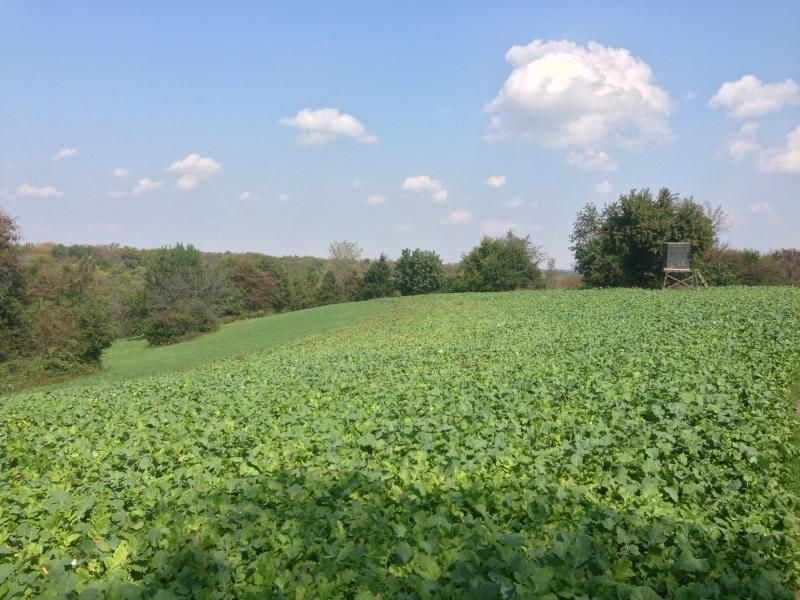
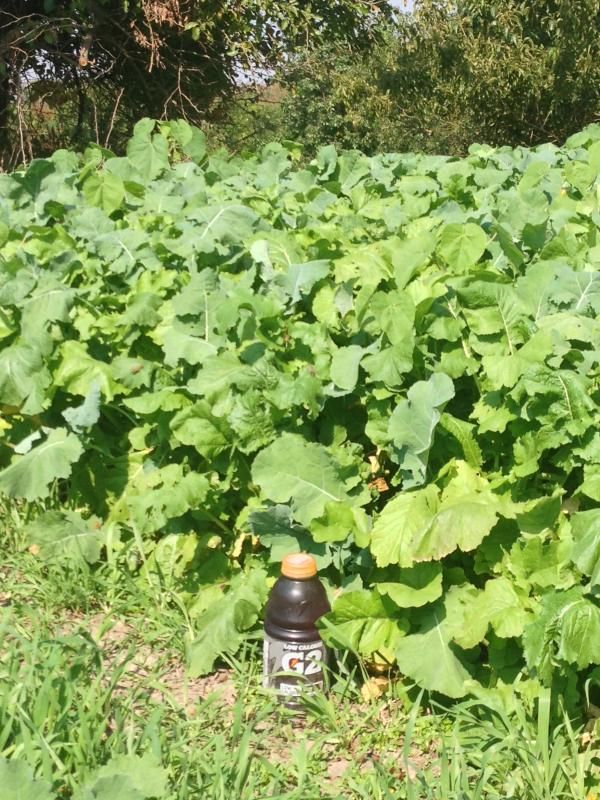
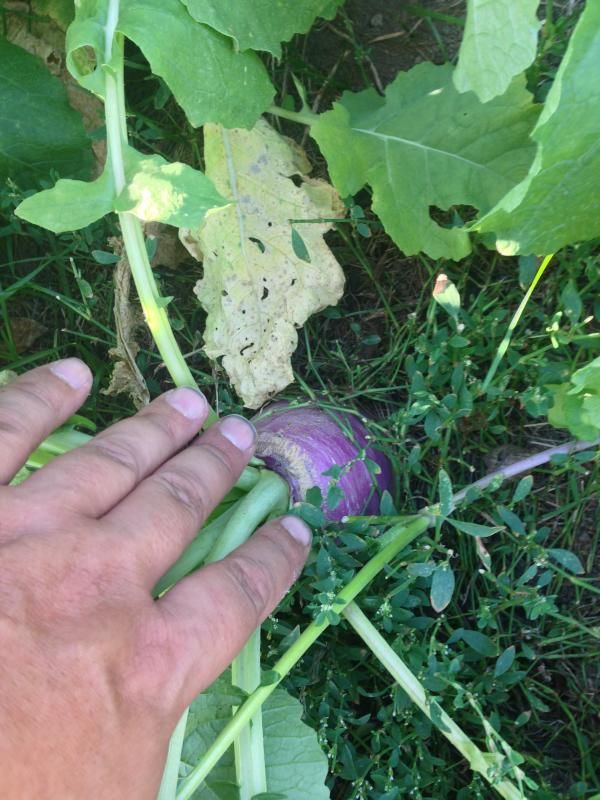
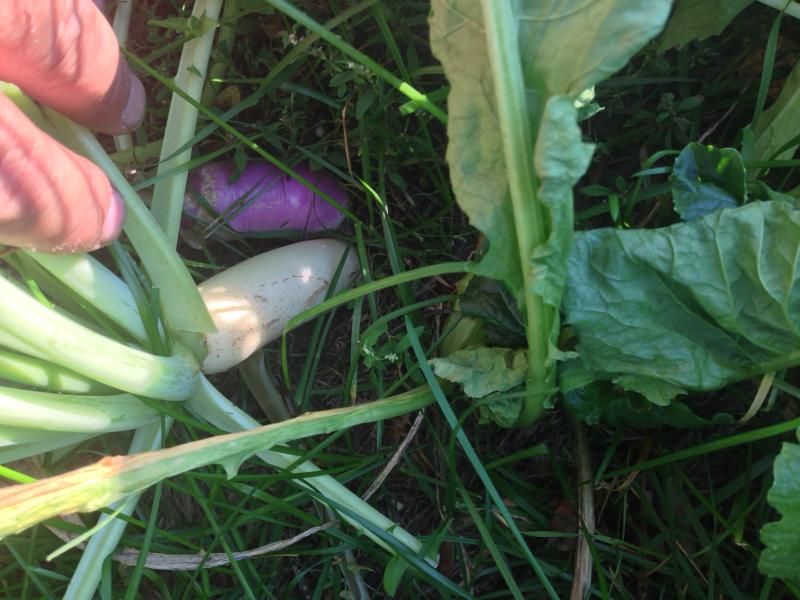




Khughes2345
PMA Member
Was at the farm today checking some cams and hanging a few stands. Thought I'd take a few pics of my brassica plot to share.
Planted July 27th. sat 3 1/2 weeks without any rain. Other than a few button weeds here and there, I think it looks great

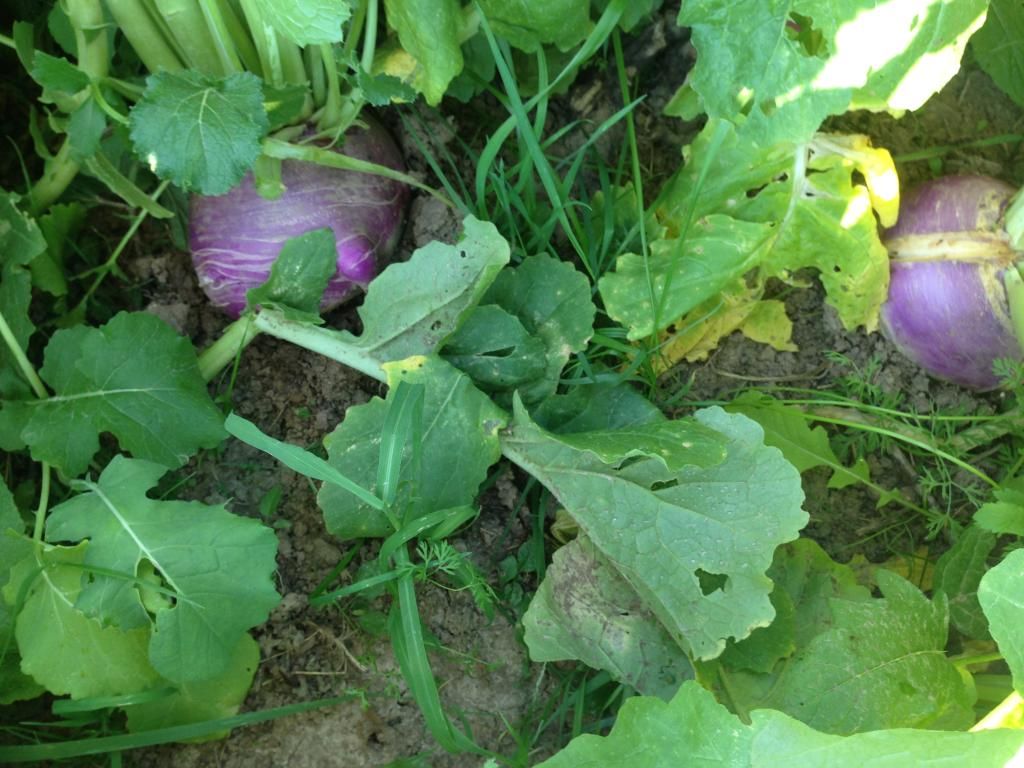
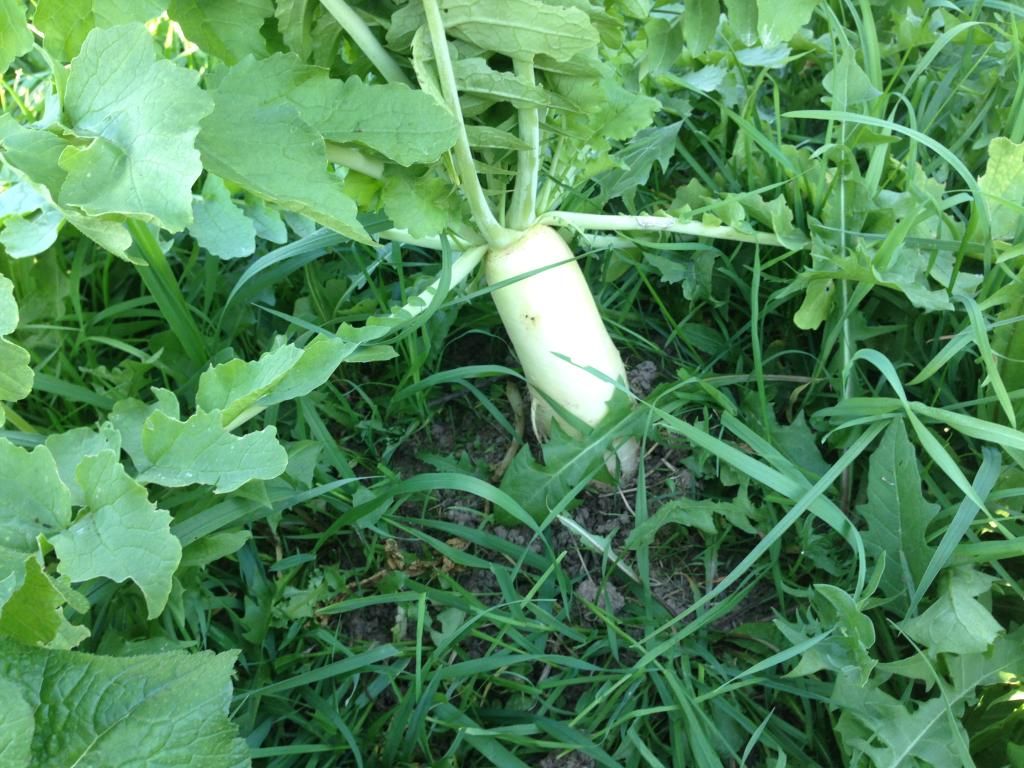
Lot of radishes this size
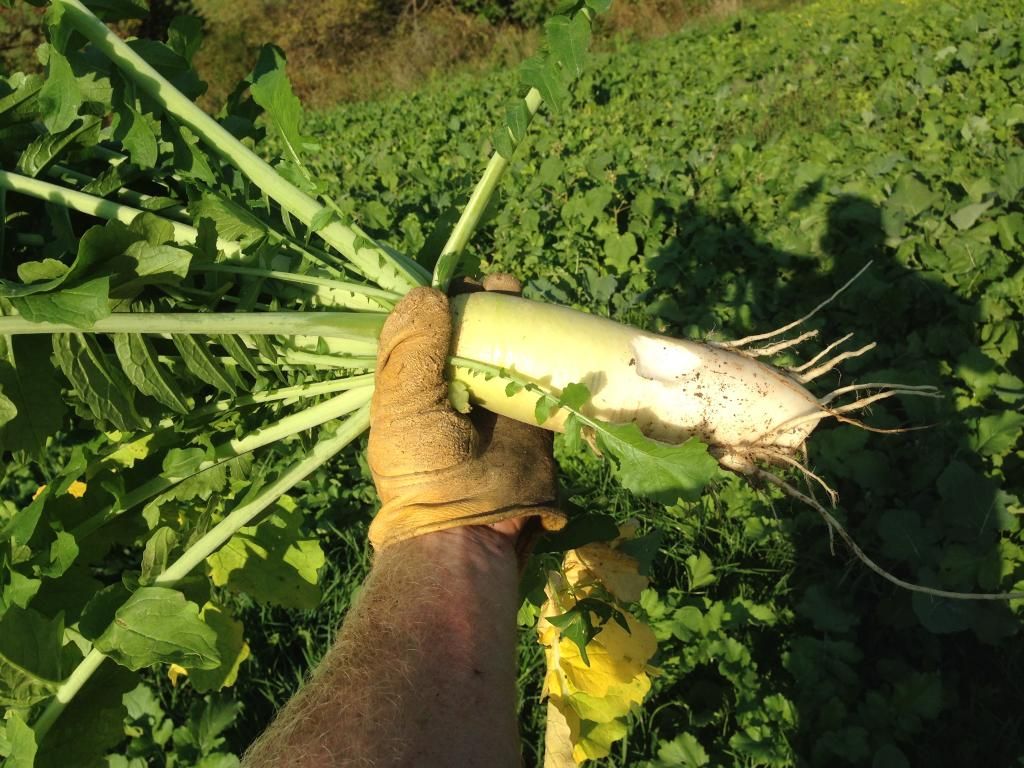
And the Dwarf Essex rape has some huge leaves!
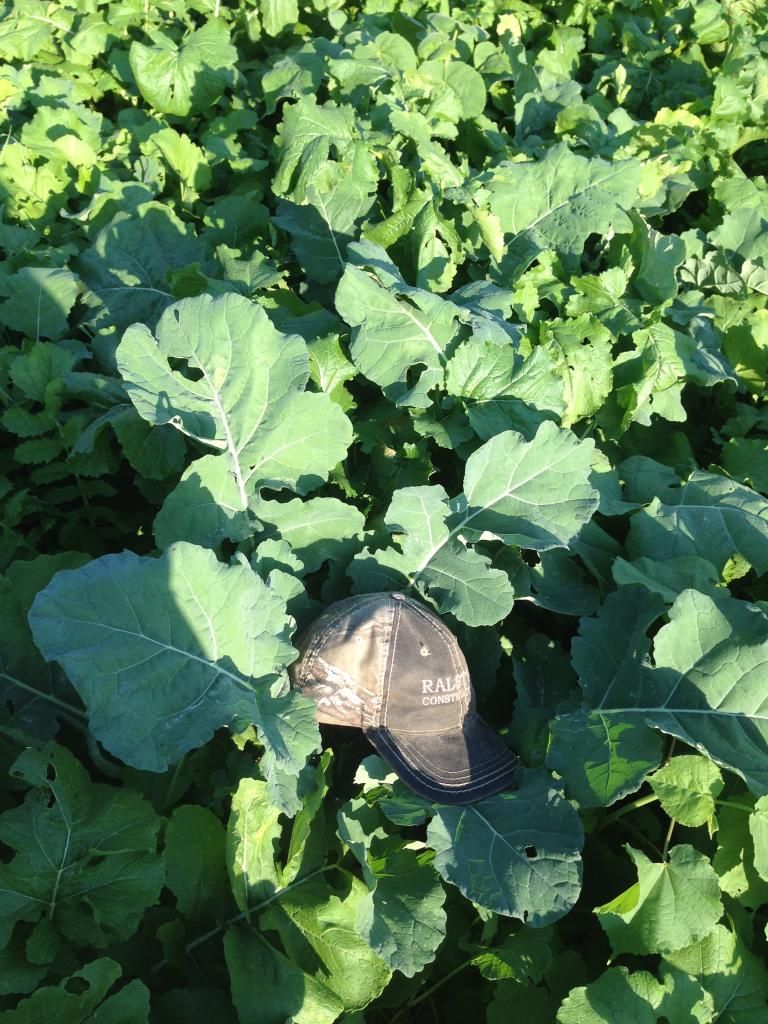
Thanks Paul, and everyone else on here that shares their knowledge. This was my first plot, and without all the info on here I don't think I could of done it.
Planted July 27th. sat 3 1/2 weeks without any rain. Other than a few button weeds here and there, I think it looks great



Lot of radishes this size

And the Dwarf Essex rape has some huge leaves!

Thanks Paul, and everyone else on here that shares their knowledge. This was my first plot, and without all the info on here I don't think I could of done it.
Greeneyed Pickle
New Member
Those are awesome pics! Have me excited to see how mine grow over the next couple months!
Tim
Tim
dbltree
Super Moderator
October 1st, 2014
Jess planted these brassicas the end of July on a farm where we have been using brassica /rye mix crop rotation four years now. The ground is nothing to write home about but since growing these crops, the soil produces outstanding yields.
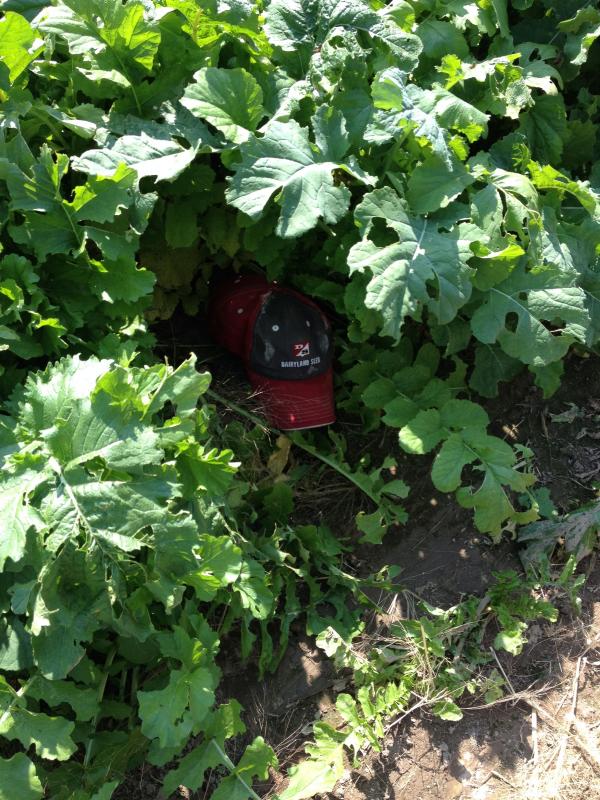
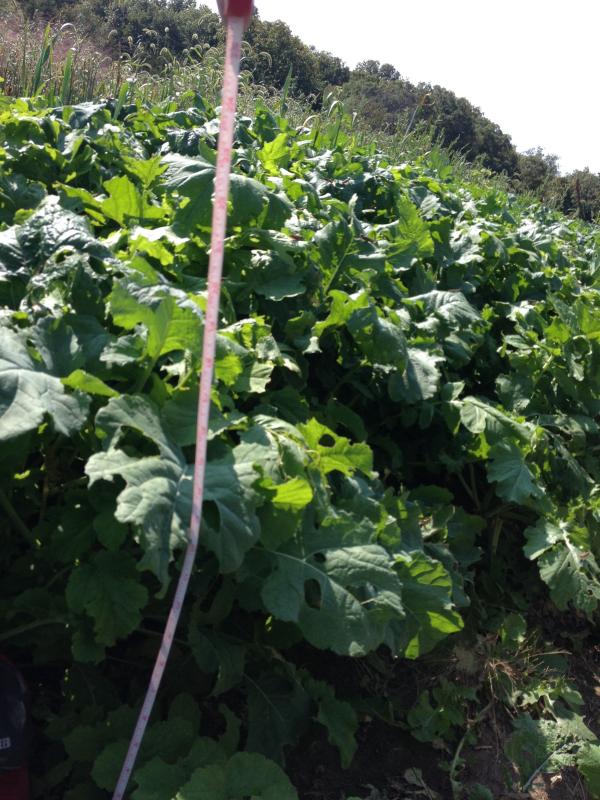
With white clover around the perimeter the plot holds whitetails 365 days a year. In 4 years we have endured 2 record wet years and 2 record breaking drought years. Perhaps it's global warming or just coincidence but the weather is hard to ignore lately.
No one gives thought to improving soil with the crops we plant to attract whitetails, until... The crops fail and their hunting season fails as well.
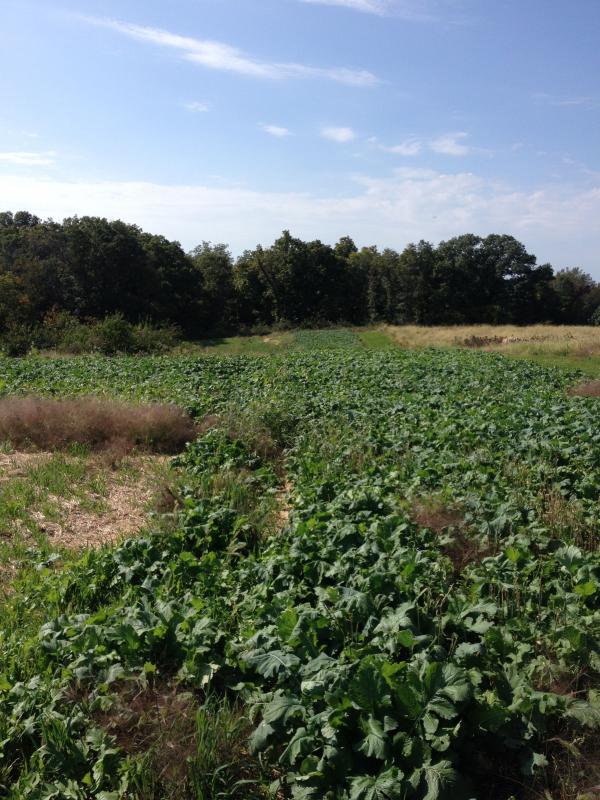
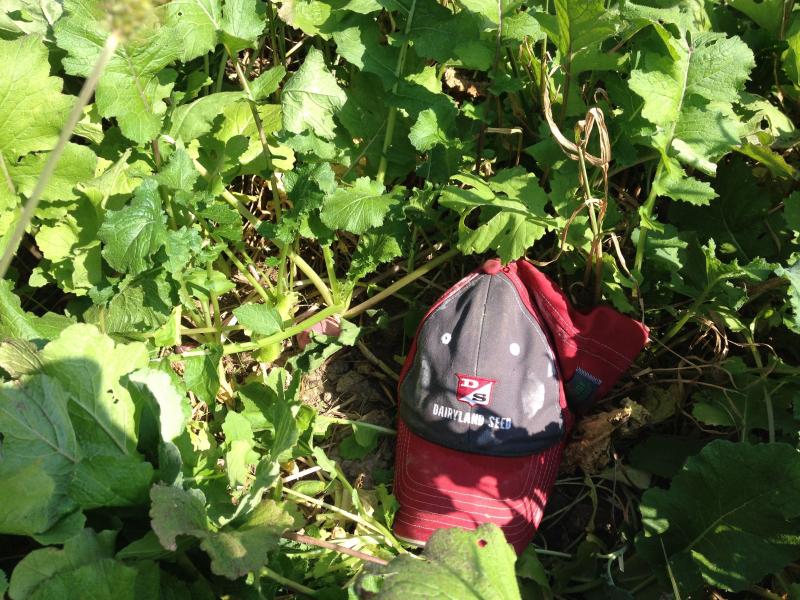
This year heavy rain's leached nitrogen deeper so many brassicas turn yellow, they also can drown in waterlogged soils. Urea 46-0-0 broadcast just before a rain can help and loosening hardpan soils with rye and forage radish can allow water to drain into subsoil, reducing the amount of water trapped in the top soil. This in turn reduces the likely hood of crops starving for oxygen because of water filled soil. Flooding of course it is another story and may require replanting to rye mix.
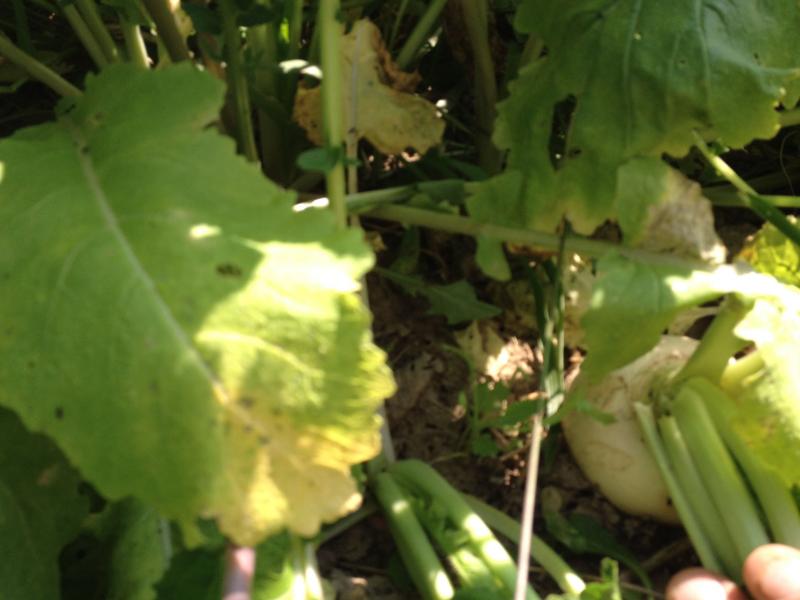
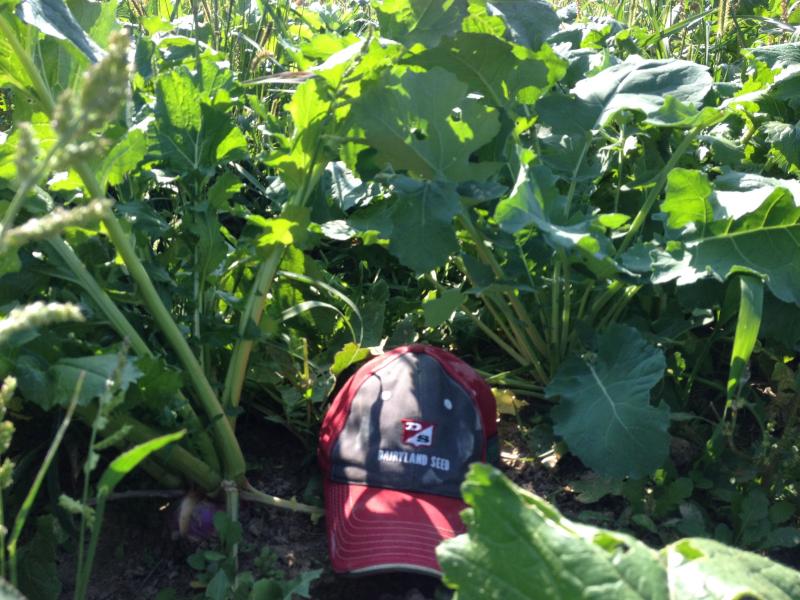
There are new comers visiting these forums, searching for answer's on how to successfully grow food plot's for whitetails on a daily basis. Knowing this I post information that is old news for some but brand new to others, it's is my way of serving Christ in the time I have left.
Brassicas can potentially yield 12000 to 16000 lbs per acre which is more then 200 bushel corn and not many plotters can grow that kind of corn! On the other hand top brassica yields are possible (within the soil and weather limitations) by even novice plotters with minimal equipment.
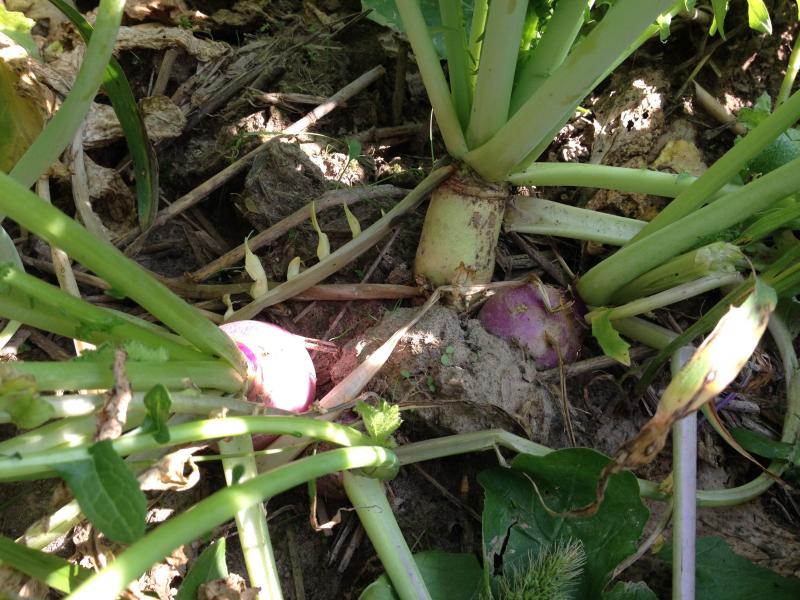
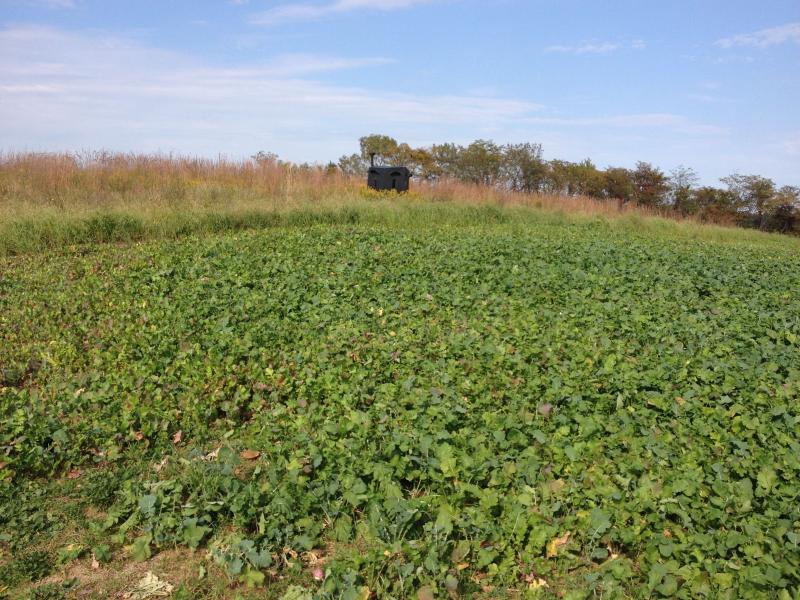
The problem for many is keeping the brassicas from getting wiped out, that is where the 3 different brassica species, rye mix and clover work together to keep deer from decimating brassicas or any crop for that matter.
Forage radish are one of the most attractive, appealing, palatable food sources I have ever tested on whitetails. They generally don't eat it until it is at least 4-6 week's old giving it a chance to grow. Because deer focus on FR first they allow the rape and turnips to grow and mature, FR are not a late season crop but serve their purpose as part of our habitat program.
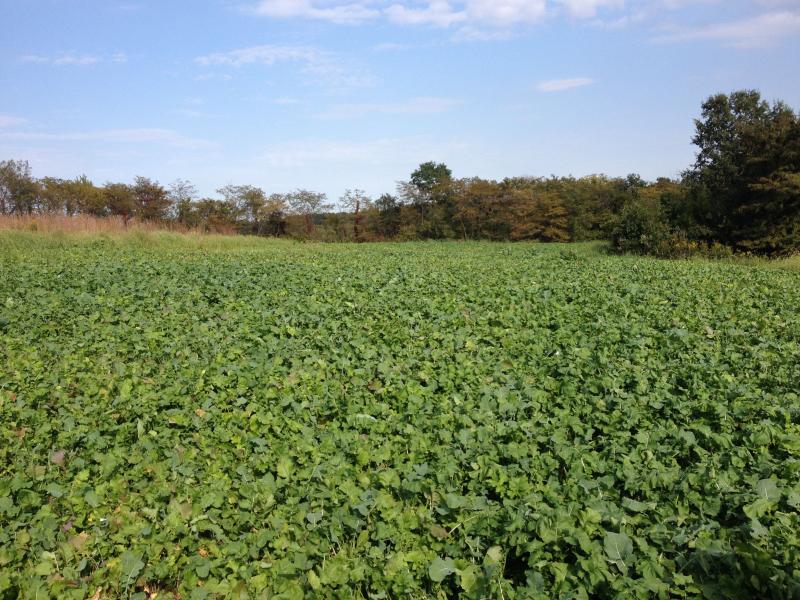
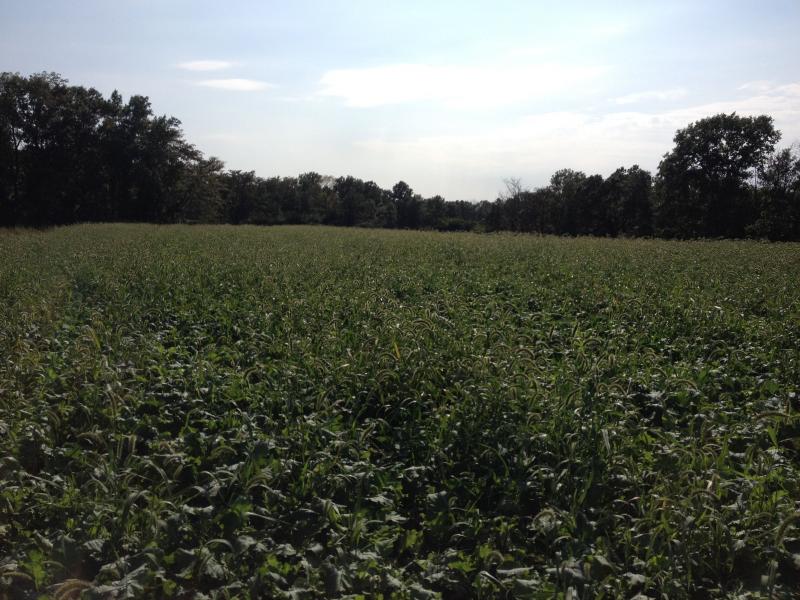
Because whitetails self thin the FR we can plant the brassica mix at almost twice the recommended rate. This helps insure that the rape and turnips are left to grow and serve their intended purpose as late season food sources. Rape is incredibly winter hardy, staying green often into January and cleaning up leaves well into March! Turnips provide both forage and a huge supply of root's which keep hungry whitetails digging through knee deep snow in the bitter cold months of winter.
Corn is easily decimated by coons, squirrels, crows and often requires expensive fencing to keep whitetails from destroying it long before season. Soybeans also require fencing and yields are a fraction of that of brassicas and in side by side testing we found that though deer ate both brassicas and soybeans they preferred the brassicas. This surprised us but the pictures don't lie!
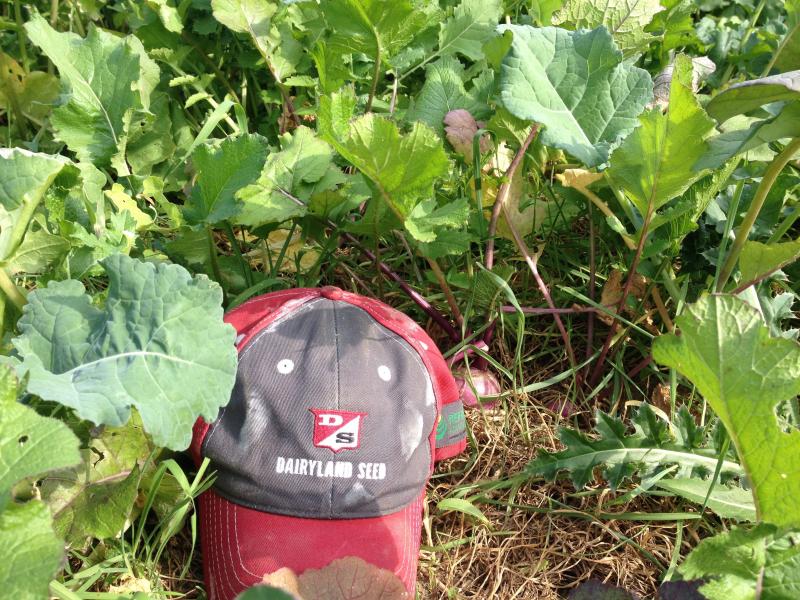
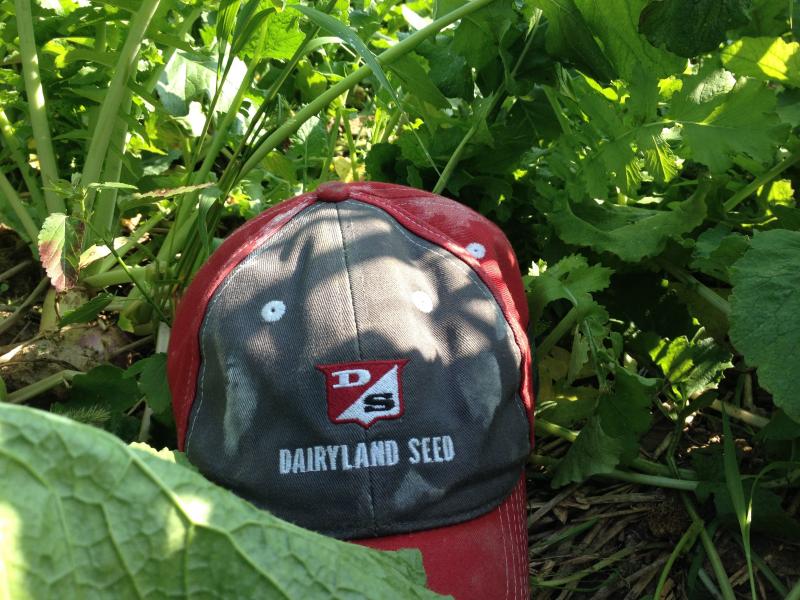
Brassicas then feed deer from mid August through mid February, so we depend on the rye mix and clover to provide food not only the rest of the year but more food when they are building fat reserves for winter.
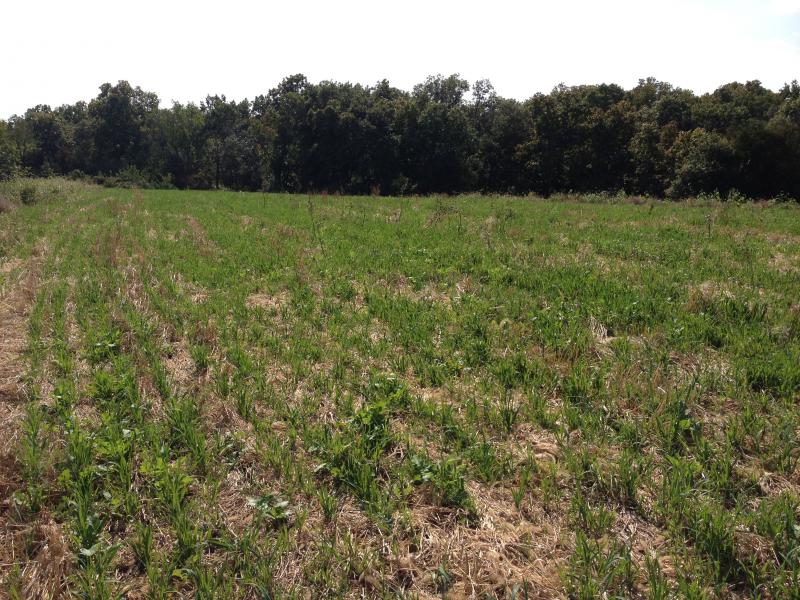
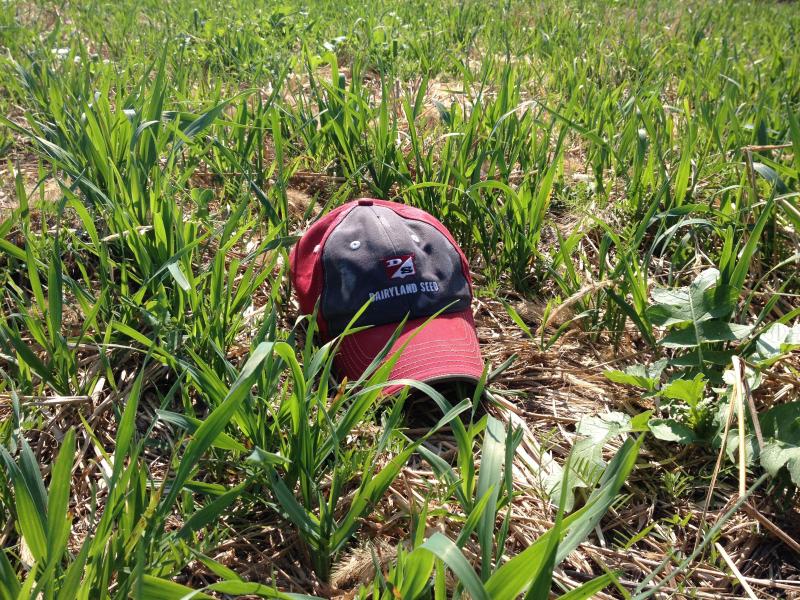
The rye, oats, peas, forage radish and red clover mix comes on by mid September and the lush forage proves irresistible to whitetails. The oats grow quickly so deer switch from brassicas to feeding on this brand new food source. Winter peas and a second crop of forage radish keep them from roaming or destroying our plot's before you have a chance to hunt them. Unlike corn and beans, these crops continue to grow some all winter long.
Jess planted these brassicas the end of July on a farm where we have been using brassica /rye mix crop rotation four years now. The ground is nothing to write home about but since growing these crops, the soil produces outstanding yields.


With white clover around the perimeter the plot holds whitetails 365 days a year. In 4 years we have endured 2 record wet years and 2 record breaking drought years. Perhaps it's global warming or just coincidence but the weather is hard to ignore lately.
No one gives thought to improving soil with the crops we plant to attract whitetails, until... The crops fail and their hunting season fails as well.


This year heavy rain's leached nitrogen deeper so many brassicas turn yellow, they also can drown in waterlogged soils. Urea 46-0-0 broadcast just before a rain can help and loosening hardpan soils with rye and forage radish can allow water to drain into subsoil, reducing the amount of water trapped in the top soil. This in turn reduces the likely hood of crops starving for oxygen because of water filled soil. Flooding of course it is another story and may require replanting to rye mix.


There are new comers visiting these forums, searching for answer's on how to successfully grow food plot's for whitetails on a daily basis. Knowing this I post information that is old news for some but brand new to others, it's is my way of serving Christ in the time I have left.
Brassicas can potentially yield 12000 to 16000 lbs per acre which is more then 200 bushel corn and not many plotters can grow that kind of corn! On the other hand top brassica yields are possible (within the soil and weather limitations) by even novice plotters with minimal equipment.


The problem for many is keeping the brassicas from getting wiped out, that is where the 3 different brassica species, rye mix and clover work together to keep deer from decimating brassicas or any crop for that matter.
Forage radish are one of the most attractive, appealing, palatable food sources I have ever tested on whitetails. They generally don't eat it until it is at least 4-6 week's old giving it a chance to grow. Because deer focus on FR first they allow the rape and turnips to grow and mature, FR are not a late season crop but serve their purpose as part of our habitat program.


Because whitetails self thin the FR we can plant the brassica mix at almost twice the recommended rate. This helps insure that the rape and turnips are left to grow and serve their intended purpose as late season food sources. Rape is incredibly winter hardy, staying green often into January and cleaning up leaves well into March! Turnips provide both forage and a huge supply of root's which keep hungry whitetails digging through knee deep snow in the bitter cold months of winter.
Corn is easily decimated by coons, squirrels, crows and often requires expensive fencing to keep whitetails from destroying it long before season. Soybeans also require fencing and yields are a fraction of that of brassicas and in side by side testing we found that though deer ate both brassicas and soybeans they preferred the brassicas. This surprised us but the pictures don't lie!


Brassicas then feed deer from mid August through mid February, so we depend on the rye mix and clover to provide food not only the rest of the year but more food when they are building fat reserves for winter.


The rye, oats, peas, forage radish and red clover mix comes on by mid September and the lush forage proves irresistible to whitetails. The oats grow quickly so deer switch from brassicas to feeding on this brand new food source. Winter peas and a second crop of forage radish keep them from roaming or destroying our plot's before you have a chance to hunt them. Unlike corn and beans, these crops continue to grow some all winter long.
MNbuckhunter
Member
When do deer eat the actual radishes from the GHFR?
goatman
I hunt days ending in Y
When do deer eat the actual radishes from the GHFR?
Right now!
dbltree
Super Moderator
Remember it's important to us white clover and the rye /cereal grain mix in each plot to keep deer from decimating brassicas. You also need to rotate brassicas (and all crops ) to prevent disease and pest problems. Whitetails don't care, they are opportunistic and will take advantage of the food source closest to their bedding area. The most critical habitat improvement then is natural browse and cover. Just keep things in perspective and it's not to late to get urea 46-0-0 on brassicas to increase yields to help keep up with heavy grazing. 
HorseDoctor
PMA Member
It's hard to find a turnip or radish in my plots that hasn't been eaten on yet- getting hammered daily
I think I need the deer at some of you folk's place to come teach the ones around here that the brassica mix is edible. This is my third year of planting it and so far it has pretty much been ignored. Deer are pounding the clover as well as the rye/oats/peas strips and are really enjoying the winter wheat that I put in for next year's dove plots, but little or no activity in the brassica strips again. At least they are good for the soil when the rot. Maybe when it gets colder they will finally discover them...
Daver
PMA Member
It's hard to find a turnip or radish in my plots that hasn't been eaten on yet- getting hammered daily
Deer are mainly eating the tops in my brassica plots right now, but I also have about 4 total acres of good brassicas this year, so if you have smaller plots they may be even more aggressive in that situation. At my place right now there is so much food available to them they aren't "hammering" anything. They also are nibbling the tops of some of the bulbs and pulling some plants out of the ground whole and eating everything. Plus there is a fair acorn crop this year too and that is suppressing usage in the plots at this point too IMO.
But just an FYI for those that are new to brassica plots...in my experience, the real "hot" time for a brassica plot still lies ahead of us. After a good hard freeze the bulbs, especially the turnip bulbs, become very attractive to the deer and they will really hit them hard then.
But...a bit of a warning too...if we get a hard freeze early, like in early-to-mid-October AND then it warms back up for 2-3 weeks, then I have had some problems with the radishes in particular kind of mushing up by late November and basically rotting. There then comes a point where the deer avoid the rotten, smelly field.
So...what we want IMO, is a normal fall where it doesn't freeze and then thaw too much. If the bulbs freeze and then it stays cold...that's OK, the freezing temps must sort of preserve them and they will dig hard for them all winter long in that event.
02blkss
New Member
Remember it's important to us white clover and the rye /cereal grain mix in each plot to keep deer from decimating brassicas. You also need to rotate brassicas (and all crops ) to prevent disease and pest problems. Whitetails don't care, they are opportunistic and will take advantage of the food source closest to their bedding area. The most critical habitat improvement then is natural browse and cover. Just keep things in perspective and it's not to late to get urea 46-0-0 on brassicas to increase yields to help keep up with heavy grazing.
Unfortunately it's been so wet in southern Iowa that I was just able to plant rye and clover last week. One plot couldn't even be disc'd so I broadcast it in anyway hoping to minimize weeds in the spring. Hopefully we have enough warm days left so it will have time to take the pressure off of the brassica. Time will tell.
BJohnson
Well-Known Member
Like many of you, I have a brassica mix plot this fall and it has grown to almost knee high (FF - Big & Beasty). This is the first time I have planted it. What does a person have to do in the spring, (anything unique or just work the ground when it dries out from the spring thaw)??
Here is my plot around Aug. 10th and it has since filled in completely and is around 18-24 inches tall.

Here is my plot around Aug. 10th and it has since filled in completely and is around 18-24 inches tall.


